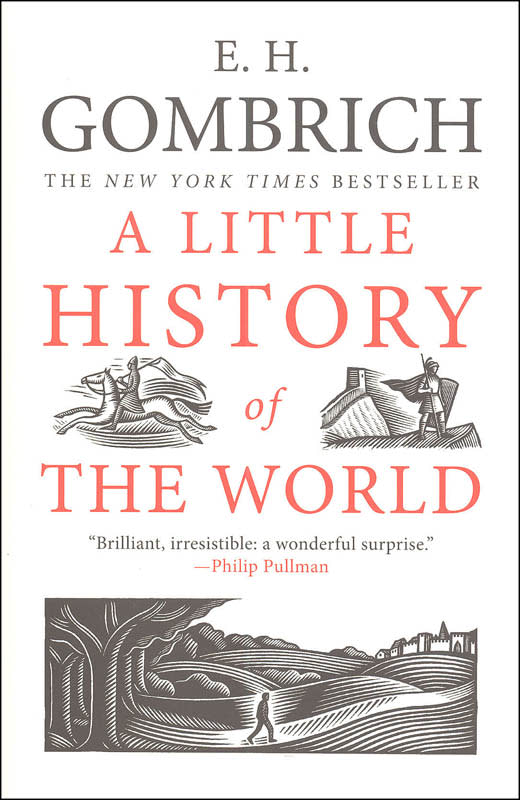"If you weren't a Christian, a Jew or a close relative of the emperor, life in the Roman empire could be peaceful and pleasant." Thus opens the chapter in this book on the Roman Empire. And this is typical of the tongue-in-cheek humor and friendly writing style of this very appealing world history presentation.
I can't use the word "textbook" to describe it since it would be a drastic misrepresentation of the book's style. Yet, the contents of the book are somewhat similar to a world history survey covering prehistory up through World War II even though Gombrich does not try to cover every event.
This delightful book was originally written in German in 1935. The long-lived author translated the book himself and added the final chapter covering WWII toward the end of his life. To his credit, in that final chapter he corrects some of his earlier comments based on things he learned or experienced in the interim.
Despite the title, this book is probably too advanced for young children; it would probably be best as a read aloud for those in upper elementary and for independent reading by junior high and older students. And it's not strictly a children's book. Adults will find it a refreshingly interesting way to brush up on world history.
Gombrich begins with a chapter about the earth being millions of years old and follows with a chapter on cavemen and a retelling of the popular prehistory. Some families might want to begin with chapter three where he begins with verifiable history. Chapters cover all of the major ancient civilizations including the Hebrews. The Chinese get a good bit of attention although Japan, India, Africa, and others are only treated in reference to western civilization. After the fall of Rome, things speed up as Gombrich hits the major highlights through the rest of world history up through WWII.
The author's perspective is a bit different than most of us are used to. He grew up in Vienna, Austria and moved to England as Hitler came into power. He seems to have no strong religious perspective, but he does speak respectfully of religions in general. Actually that respect is extended even to Egyptian worship of cats as Gombrich says, "They even went on worshipping cats as sacred animals. And if you ask me, I think that in this, at least, the ancient Egyptians were right" (p. 16).
Gombrich tells us that he comes from a Jewish family but doesn't let us know his personal beliefs. He speaks respectfully and frequently of the Bible, referencing the Old Testament from time to time. But he also says, "One day—but there's no hurry—you may come to read the Bible. Nowhere else will you find so many stories about ancient times so vividly told" (p. 25). We read about Jesus, His message, and His death, but not His resurrection, although that could be an omission for reasons other than belief or unbelief (pp. 93-94). Christianity is treated positively and is given rightful attention as a major historical factor. Gombrich actually gives more information about Christianity than one might expect. For example, he summarizes Luther's ideas saying, "All an individual needs to be saved is his own unshakable belief and faith in his God. Faith means believing in the great mysteries of the Gospel, believing that we are eating Christ's body and drinking his blood from the chalice when we take Holy Communion. No one can help another person to obtain God's grace. Every believer is, as it were, his own priest" (p. 181).
His broad acceptance of religions is probably a contributing factor to his advocation of tolerance. He says, "Would it not be better if people got on with one another regardless of any differences of opinion or belief that they might have? Better if they respected one another and tolerated each other's convictions? This was the first and most important idea that the people who thought about such things now voiced: the principle of tolerance." (p.214).
For the most part, Gombrich's European perspective is refreshingly personal as he intertwines his own experiences and observations of countries with which he is so familiar. On the other hand, his simplistic summary of the conflict between northern and southern states at the time of the Civil War in America might be challenged for slight inaccuracies… but that's not his own history.
Personally, I would probably use this as a read aloud and discussion book with children from about ages 10 through high school, adding other resources and assignments to expand world history coverage to make complete courses for the different age levels.
Note: the 2013 edition of this book with the blue and cream cover includes illustrations.










